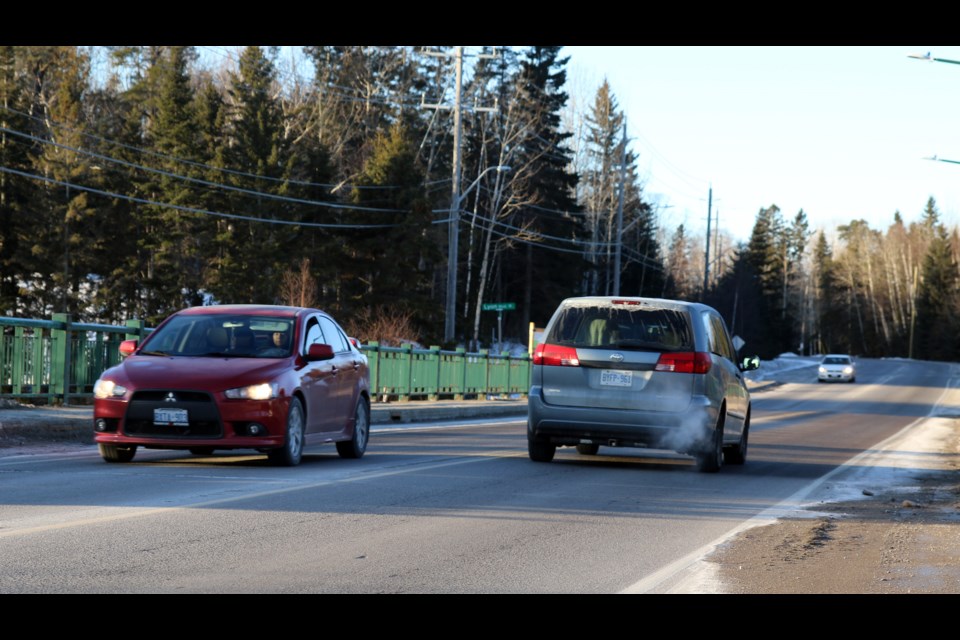THUNDER BAY -- Boulevard Lake's surroundings have exploded with life along the Arundel Street Active Living Corridor but motorists' high speeds are making city council call for calm.
Council voted to accept $34,000 in new traffic calming measures for the Current River thoroughfare on Monday, including installing increasing signage, two radar speed display signs, and flexible bollards running in the eastbound lane parallel to those running westbound that were installed in 2015. Police presence in the area is also expected to increase.
Speed radar along the wooded stretch found motorists were traveling an average of 70 kilometres per hour in some seasons, 20 kilometres over the speed limit. At that speed, there's a 90 per cent probability that any auto-pedestrian or auto-cyclist collision would be fatal.
"I'm really happy," Current River Coun. Andrew Foulds said following council's decision to approve the measures.
"The last few days, the number of phone calls and emails from constitutents happy that this is being dealt with really gives me some confidence that council made the right decision this evening."
Foulds touted the calming tools as "relatively inexpensive," aruging they have already proven to be successful. Traffic passing the radar speed display signs on Dawson Road, for example, travels an average of five kilometres slower than it did before such signs were installed.
Costs the plan will add to the 2017 municipal budget include $22,000 for the solar-powered radar speed display signs, $6,750 in flexible tubular makers, and $5,250 in sign installation and removal. Increased sweeping and snowplowing for the multi-use lanes will also add costs.
Only Couns. Frank Pullia and Larry Hebert opposed the motion.
Pullia pointed out the Arundel Street bollards were installed as a pilot project, yet administration has never delivered a report to show the tactic's effectiveness.
Instead, he said, city staff was asking council to approve more bollards in a move he foresees becoming a standard and unwelcome response to speed problems throughout the city.
"Some like them (bollards) but the great majority, including myself, don't. I believe they are a distraction," Pullia said.
"They create unnecessary problems. You think they provide safety for the people who are running and the people on their bicycle? They create all kinds of problems. I heard from citizens including some of the ward meetings who brought this up. They're challenges in the minds of many people. This council hasn't had the chance to assess and evaluate this pilot project that's now in front of us lumped together with a bunch of solutions."
Others, including Mayor Keith Hobbs, challenged administration's decision to hire Winnipeg consultants at a cost of $30,000 for a project that will ultimately cost Thunder Bay only slightly more to implement.
“I cannot believe we couldn’t figure this out ourselves," Hobbs said. "This is stuff we’re doing already. Bollards? Working with the Thunder Bay Police? Speed signs? We do this already.”
City mobility coordinator Adam Krupper said the report is intended as a professional development toolkit for the city's engineering department. While it has implications for other problem traffic areas, he said, it proposes a number of tailored solutions.
"Every other time someone is concerned about speed, we now have a way of dealing with it," Krupper said.
"There were concerns that this was going to be the cookie cutter approach: 'we're going to put bollards and speed radar signs every time there's a speed concern.' But there's over 25 different interventions to deal with speed and the data we're getting to show us how to use every one of these. What's appropriate for the context?"
Krupper said it's "highly likely" administration will recommend a crossover be installed at Arundel Street at Toledo Street in 2018.
Amid other long-term solutions, the report also proposes raising a barrier or concrete curb between vehicles and non-motorized traffic.
